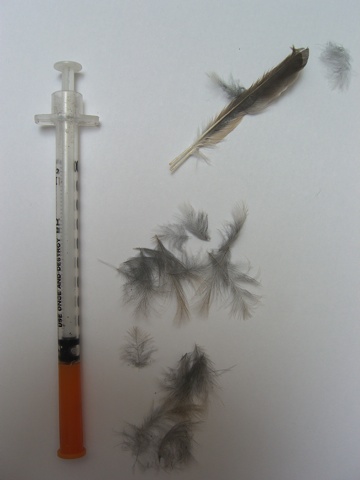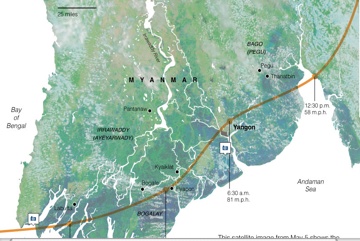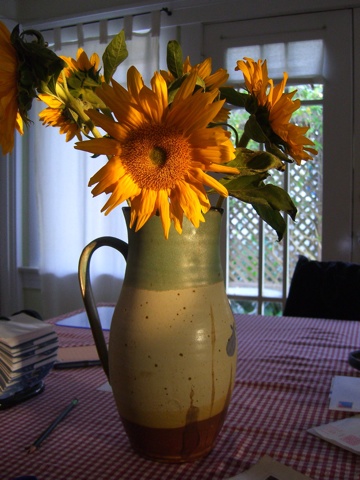On BART, going from North Berkeley to downtown Berkeley on my way to class. I got on the last car of a three-car train and since I was going just one stop, I didn’t sit down. I stood next to a woman in a motorized wheelchair; she was facing away from me and toward a vacant seat. It’s about a two- or three-minute trip from one station to the next, and I was preoccupied. But gradually it dawned on me that the woman in the wheelchair was reading a newspaper that she had place on the vacant seat. She was turning the pages with one of her feet. A couple of days ago I was reading about Christy Brown, the Irish artist (subject of the movie “My Left Foot”) who taught himself to paint and write though he had control over just one of his feet. Watching the woman in front of me, I was reminded of that and I thought about the determination it would take to learn to do what she was doing and take it into the world–to be as “normal” as she can be, “normal” defined as what the rest of us are doing. Even in the short time I was watching, I became absorbed in what she was doing. If she had turned and looked at me, I would have said something vague like, “Hey, how’s it going?”
Across the aisle from the wheelchair woman sat an African-American woman with a striking straw hat and stylish sunglasses. She was nicely turned out. The straw-hat woman was looking at the wheelchair woman. She looked like she was going to say something. As we approached the Berkeley station, she spoke up. “Excuse me. … Excuse me,” she said, looking at the woman in the wheelchair. “It’s amazing … it’s amazing what you’re able to do. I really admire you.” I couldn’t see the wheelchair woman’s face. But I heard her say, “Well, that’s my life.” She sounded matter of fact–no impatience or crossness in her voice. “I admire that,” the straw-hat woman said, “the way you’ve learned to get along with what you have. …””
The train had stopped at the platform and the doors had opened. I got off and didn’t hear any more of the conversation. The straw-hat woman’s frankness was as striking to me as the wheelchair woman’s physical performance.
* * *
In Ohlone Park with the dog. As usual, he had spotted a squirrel and went into stalking and observation mode. I didn’t hurry him along, and we wound up under the canopy of an 80- or 100-foot tall redwood. There was a commotion overhead, a bird fluttering. I looked up and saw that it was a little hawk–a sharp-shinned or a Cooper’s. You see them around here; they hunt other birds. The one overhead was pretty well obscured by redwood boughs, but it moved twice into higher branches. It was only when it settled down that I saw it worrying something with its beak–a freshly killed bird, it turned out. A steady fall of downy feathers came down from the tree, and I caught a few. While looking for feathers around the base of the tree, I discovered a used syringe. More feathers fell, maybe from a mockingbird, which, per Harper Lee, would be a shame. Finally the hawk had worked its way to the main course, I guess, because the feathers stopped. I look at the birds around here and often think of the calories they need to survive; how many mockingbirds does a Cooper’s hawk need to kill and lunch on to enjoy a healthy, rewarding lifestyle (and raise a family)?

Technorati Tags: berkeley




